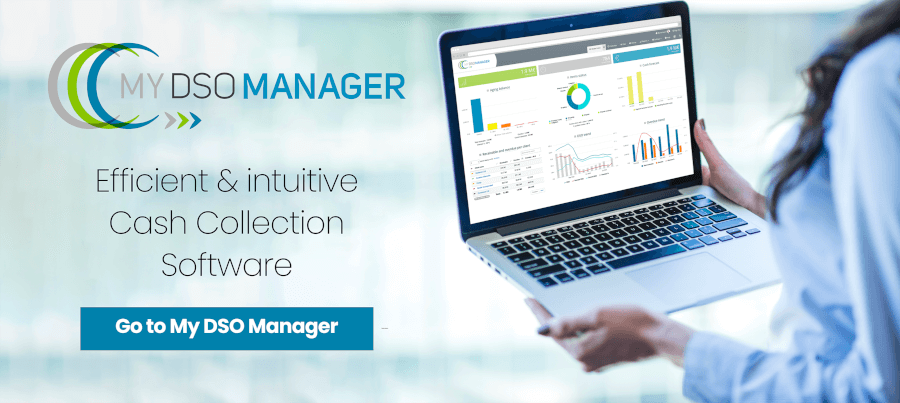The credit limit is the maximum amount of loan that the seller agrees to grant to its customer.
It depends on:
- The assessment of creditworthiness that you previously made. See the Credit analysis tutorial and Credit notation,
- Your customer's financial capacity,
- The commercial stakes (key account?),
- The payment term was negociated,
- The expected amount of the business.
What is a Credit Limit?
The credit limit corresponds to the maximum credit risk that the supplier agrees to take on a particular client.The credit risk includes the accounts receivable (invoices including taxes plus other receivables) and the backlog (orders in hand not yet invoiced).
-

Credit limit management in My DSO Manager
Use the credit limit set up tool included in My DSO Manager.
It is based on business requirements and customizable financial criteria.
My DSO Manager includes a workflow to validate credit limits according to approbation levels.
Then, use the risk report and alerts to manage credit risk and outstanding receivables relative to the credit limits of your customers accounts.
The software provides all the indicators required to assess the credit limit and the risk. See more with the online demo.
How to set up a credit limit?
The first step is to collect information about your customer:- Business expected:
- Amount of sales expected with the client,
- Period (in months),
- Payment term considered,
- Sales Manager feedback:
- Key customer or not?
- Position on the market, growing business?
- Reliable or not?
- Legal and financial information about the customer:
- Last profit and loss accounts and balance sheet,
- Company's legal form,
- Date of creation,
- References from other suppliers,
- Payment behaviour.
- Customer visit: When the business or credit risk stakes are high, it is necessary to visit the customer to:
- Get fresh information about the customer’s financial situation,
- Create a personalized contact with the customer,
- Negotiate the financial conditions of the business (payment terms, payment guarantees, schedule of payment...etc.)
The required credit limit is the business's credit limit. It is the product of the estimated sales to come, the schedule of invoicing, and the payment term granted to the customer.
The required credit limit can be challenged by negotiation with the customer.
The third step is to set up the Credit Limit:
Once the required credit limit is calculated, it must be compared to the information collected about the legal and financial situation of the buyer, and its payment behavior.
The Credit Limit has to be consistent with the financial capacities of the customer and its payment behavior.
Equity in order to compare the credit limit with the stable financial resources of your client.
Tangible Net Worth to ensure that the credit limit is proportionately consistent with the intrinsic financial value of your buyer.
Accounts Payable to prevent you from becoming your client's primary funder, especially if the credit amount is greater than what shareholders and bankers have invested. By becoming a primary supplier, you can make your customers dependent on the credit granted.
Turnover. The credit limit should be significantly lower than the turnover of your client. Be careful with the proportion of credit limit amount / company size of your client.
Operating income. Compare the credit limit to the operating income of your client. It may not exceed 50% of the operating income.
Pilot your credit limits
Economical context is changing very fast and it will change faster in future. It is the same for the financial situation of your customers.Once calculated and validated, the credit limit is a living data which influences daily business relationships.
It is compared to the outstanding receivables plus the portfolio of accepted orders, the sum of which must not exceed it. If the total outstanding reaches the same level then an action to review the limit must be carried out:
- Either new tangible elements make possible to increase the credit limit (new positive financial information, quality of payment behavior, etc.).
- Or this threshold cannot be increased because it is consistent with the financial structure of the buyer. In this case, several solutions are available to pursue the growth of turnover with his client without increasing the risk:
- Request advance payments (possibly against discount) to reduce the outstanding amount.
- Negotiate new payment conditions (reduction of the payment term, get advance payments).
- Obtain an additional guarantee (credit insurance, bank guarantee, parent company guarantee, etc.).
- Finance receivables without recourse (factoring, bank discount without recourse, mobilization of means of payment like drafts or commercial transfer, etc.).
Conclusion
The setting up of credit limits for each of its private / limited company customers is necessary to manage customer risk and limit its commitment according to the buyer's capabilities.Another advantage, this practice pushes salespeople and other managers to negotiate better terms of payment with customers because it allows them to make more sales.
This practice is therefore very beneficial for the company to develop its business while improving its WCR and limiting its exposure to the risk of bad debts.
Even customers can find their interest because some will be happy to negotiate a down payment or an advance payment against an attractive discount.